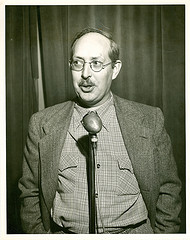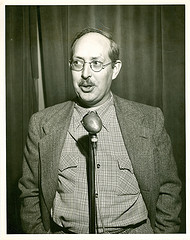Virtues of Inactivity
The Virtues of Inactivity
adapted from a post to rec.folk.dancing, 2003
A caller wrote, discussing dancing a few decades back: "The
actives often got to swing when the inactives didn’t; they went down the hall
and back while the inactives waited, that sort of thing."
That single word "waiting" doesn’t do justice to the many
possibilities open to the inactives in these older dances:
• They get to talk to each other, and not just those interrupted
conversations that we have with a partner in the more modern dances, where you
get a few beats of conversation before you’re off somewhere else again.


 How this collection came to be: My work on the Bob McQuillen documentary, Paid To Eat Ice Cream, helped me realize how many stories of the previous generations of dancers had been lost. The New England Folk Festival one year held a “Remembering Ralph Page” session that attracted fewer than two dozen participants. Some potential participants were committed to other workshops at that same time, to be sure, but many of the people who had danced to Ralph Page simply were no longer alive. As I continued to search for photographs and films and stories from earlier eras of traditional squares and contras, I resolved that no matter what I was able to locate, at least I could ensure that more recent generations left a better record of their involvement.
How this collection came to be: My work on the Bob McQuillen documentary, Paid To Eat Ice Cream, helped me realize how many stories of the previous generations of dancers had been lost. The New England Folk Festival one year held a “Remembering Ralph Page” session that attracted fewer than two dozen participants. Some potential participants were committed to other workshops at that same time, to be sure, but many of the people who had danced to Ralph Page simply were no longer alive. As I continued to search for photographs and films and stories from earlier eras of traditional squares and contras, I resolved that no matter what I was able to locate, at least I could ensure that more recent generations left a better record of their involvement.